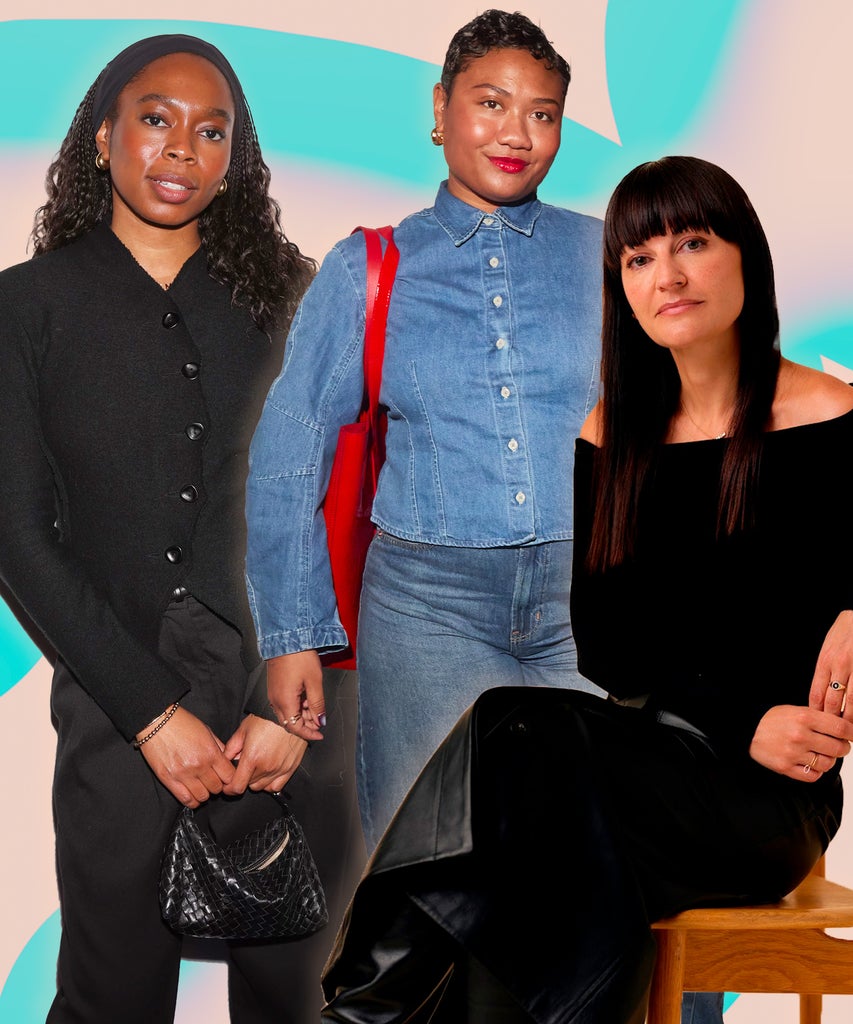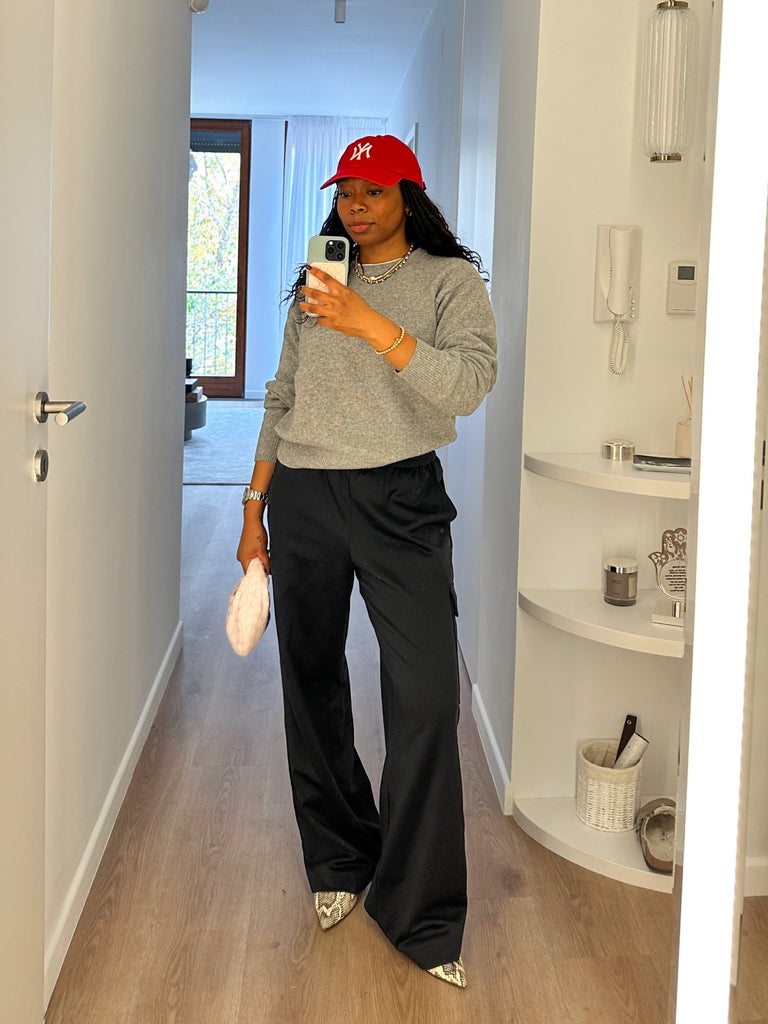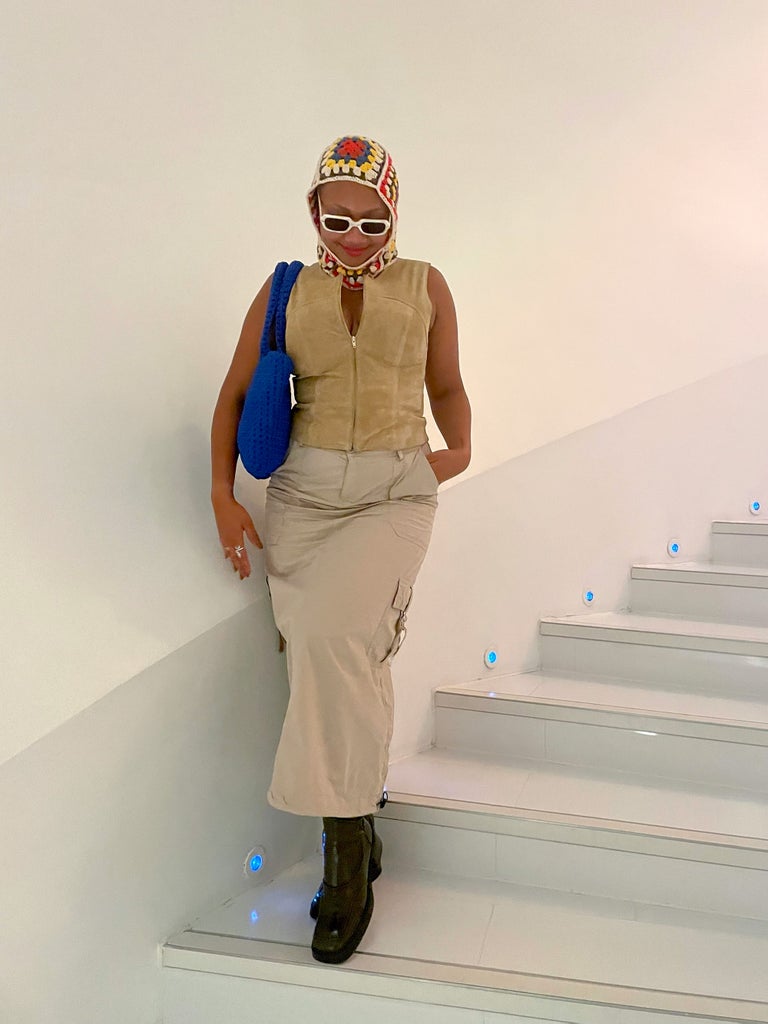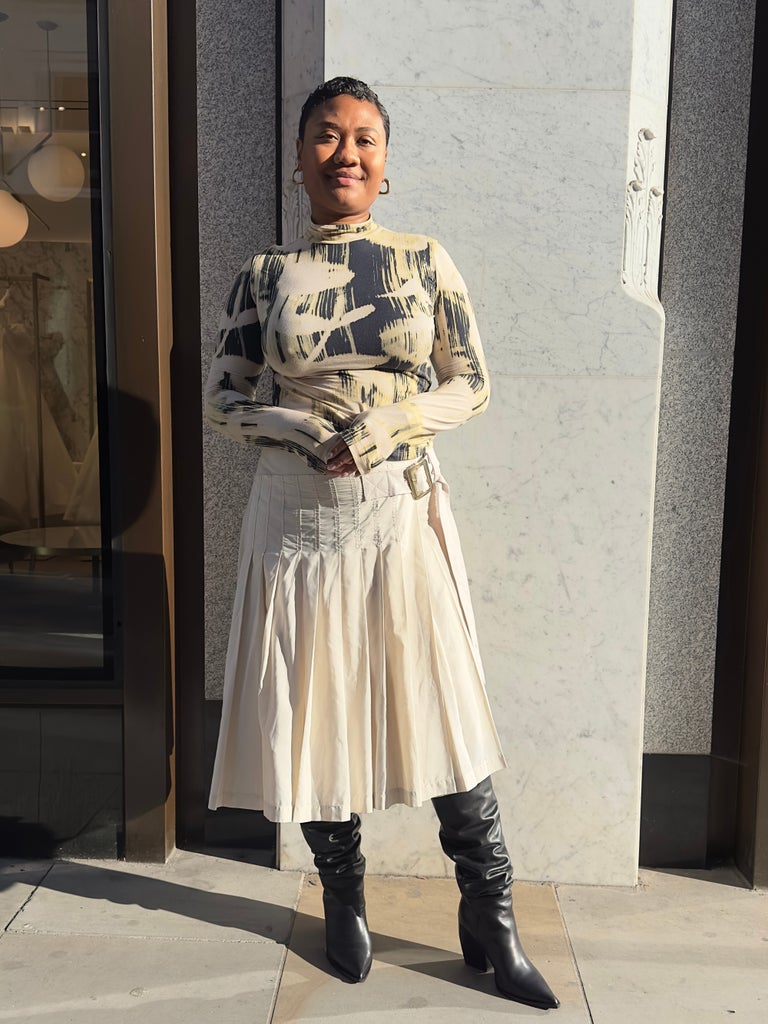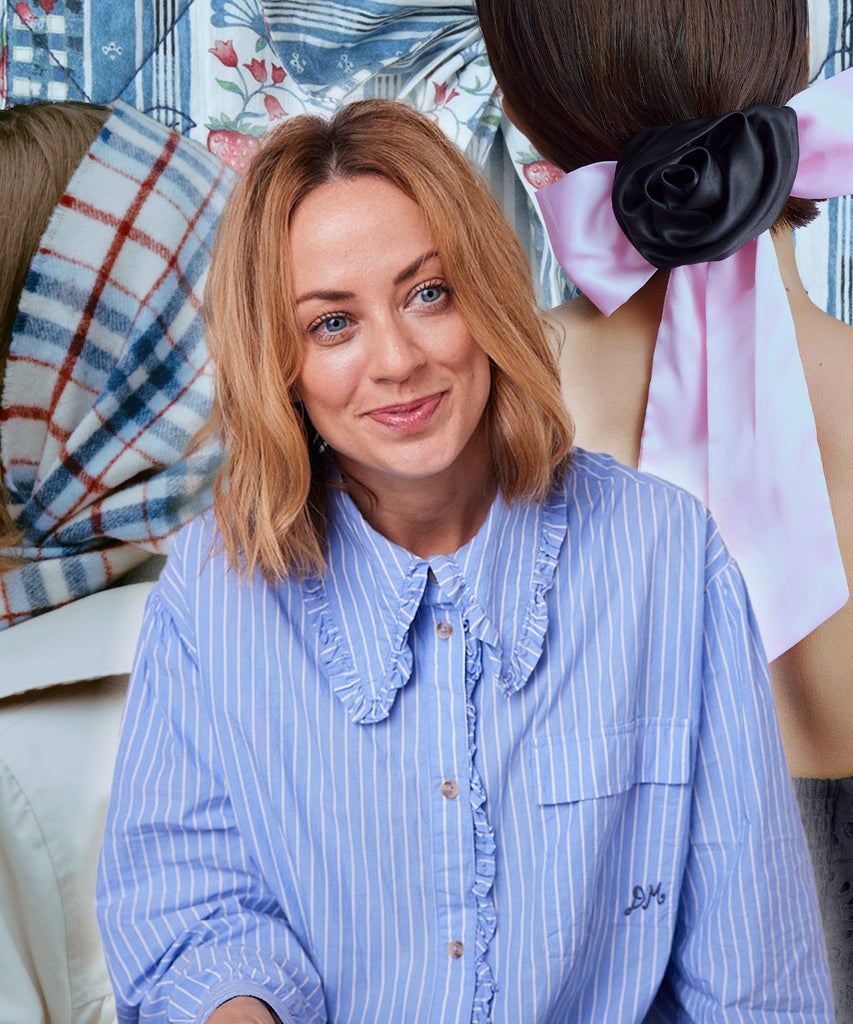
New York City-based Chiru Mondo Murage Weinstein was, ironically, losing sleep over Damson Madder’s pajama drops. Ever since an Instagram ad introduced her to the British fashion label, she found herself setting alarms during the middle of the night in order to secure a pair. “I didn’t have anything that looked like that,” she remembers. (She eventually emailed to plead for more U.S.-friendly launch times. To the delight of Weinstein and her fellow Stateside fans, Damson Madder obliged.)
You’ve likely come across its famed nightwear, too. Weinstein, 30, calls the assortment of frilly eye masks, bow-adorned button-downs, and boxer shorts the “gateway drug” to her new favorite brand, whose distinctive pieces are increasingly visible in the wild since the company set its sights on U.S. expansion this year.
“I loved the idea of the limited quantities, and the fact that I had to wait and score them,” she says. “The drops would sell out Supreme-level fast — like, within minutes.”
Since joining the fan club, Weinstein, who works in tech and commutes to an office in downtown Manhattan, now spots people wearing Damson Madder all the time — the leopard Tilly gilet, which helped put the brand on the map across the pond, in particular. Like all of Damson Madder’s pieces, the vest is made from 100% organic cotton and recycled materials. And, with its bow closures, quilted fabric, and bold animal print, its conversation-starting design goes further than what shoppers had begun to settle for.
Before starting Damson Madder, Emma Hill worked in fashion buying within the U.K. high-street category. For years, she got accustomed to making sure garments were as cost-effective as possible: no big pockets, no oversize collars, no interesting buttons. “I found that stressful because I wanted to have a dress or blouse with extra things that are exciting,” she recalls. “I wanted people to look and say, ‘Oh my God, where did you get that lovely piece?’ I felt like that wasn’t happening anymore. I was disappointed by the quality of the product and the lack of responsibility taken.”
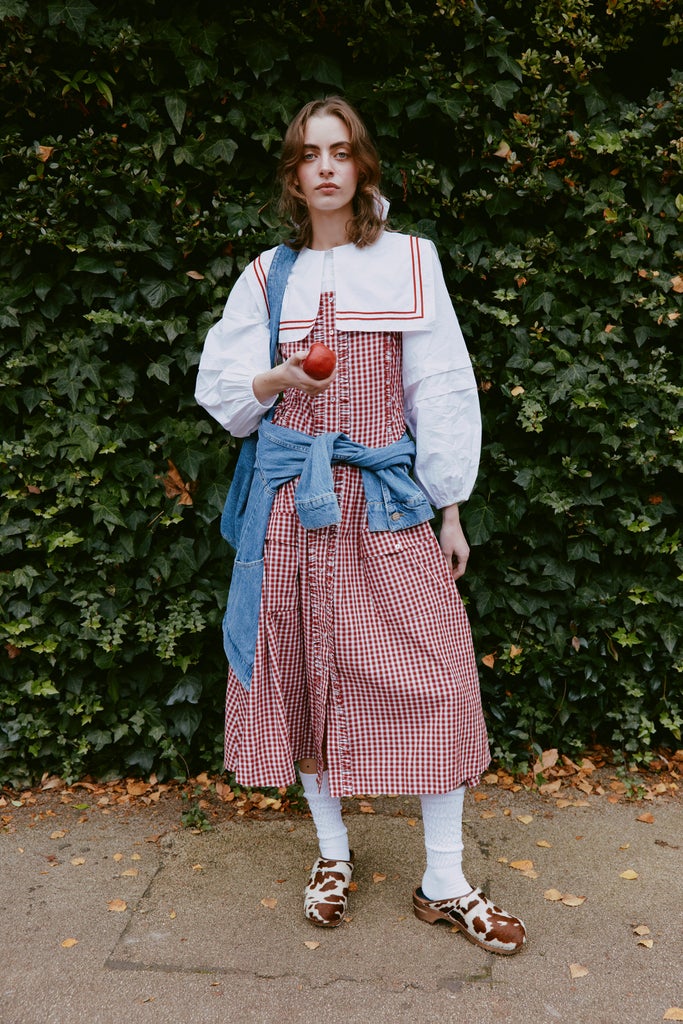
That urge to create special, unique clothes — where shoppers could know where and from what they’re made — led to Damson Madder. Timing was tricky, though: After spending 18 months on the debut collection, Hill revealed it to the world in April 2020, just as a pandemic-stricken U.K. went into lockdown. “There were absolutely no eyes on it at all,” she says.
As stay-at-home measures continued, the brand got some nice press in traditional media thanks to its focus on slow fashion. Towards the end of the year, sales picked up, and Hill breathed easy again — but more challenges came when the brand’s factories in Turkey went into lockdown the following year. “I would say the first three years were really, really hard,” she says.
Weathering the storm has propelled the label to new heights, thanks largely to a bubbling interest from the U.S. Having noticed that the aforementioned leopard vest was going viral every time a handful of maximalist-leaning influencers posted it on Instagram (organically!), Damson Madder experimented with paid ads targeting shoppers in that market, to further capture curiosity. In March 2024, content creator Sofia M. Coelho posed in her Tilly to the tune of 45,000 likes, a moment the brand calls “really helpful” for both sales and interest. The following month, Hill started to seriously consider opening a pop-up store in New York.
For an environmentally-conscious brand, doing things slowly is the modus operandi, particularly when trying to break into a new market. “That was one of the main reasons we decided to do a pop-up — we were having conversations with some wholesale partners, And they wanted to book fairly big business. I was unsure because we’d never done anything like that before,” she recalls. “The pop-up allowed us to dip a toe in the water, trial a few things, and see what the appetite was like.”
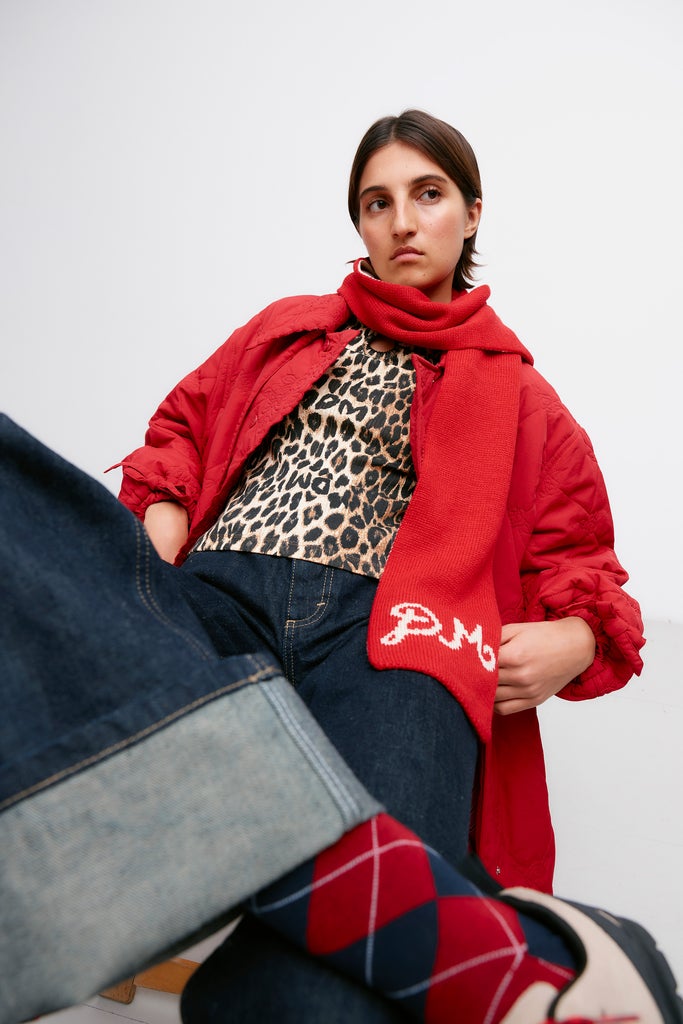
At that point, Damson Madder had only done one pop-up — on its home turf, in London, in February 2024. The team planned for this one, its first one overseas, to coincide with New York Fashion Week in September (a convenient time to make the most of the energy in the city and to get in front of buyers, editors, and content creators hunting for a new discovery.) With her heart set on Soho, where the retail spaces tend to be on the larger side, Hill laughs that its test ground ended up being four times the size of the inaugural London one.
Social media proved paramount in evangelizing the brand once again, working with influencers whose personal style aligns with the brand’s joyful ethos especially. Hill name-checks Anna Barger, a sunny girl-next-door type with 416,000 followers: “She had been a fan of the brand for a while. It was really nice of her to come and her post was really helpful.”
Barger was one of many notable faces who attended a fun-filled cocktail party to usher in the pop-up ahead of its four-day run. On the night, some 200 people got better acquainted with Hill, her team, and the product, including Ella Emhoff (with her dog, Jerry) and Ilana Glazer.

Sales and visibility in the U.S. increased thanks to the pop-up, and, at present, over 25% of total e-commerce sales are still coming from that market. The brand was also able to connect with retailers like Nordstrom and Saks, after buyers came to check out the buzz during the New York run. (Damson Madder has been working with Lisa Says Gah as a retail partner since 2023, and will continue to.) Hill has also been approached by several intriguing collaboration proposals, some of which she’s considering, for 2025.
The foray into U.S. brick-and-mortar gave the team real-time intel about who Damson Madder’s audience is and what that shopper wants. “I think everyone thought we were much bigger than we were,” Hill says. (“My core team came out and were working at the pop-up — my head of marketing was at the check out!”) Almost five years in, there tends to be a defined “Damson Madder girl” in the U.K. — “but in New York, we saw all these different types of people, all styling the product in a very different way. It was the best feeling.”
Damson Madder has seemingly struck gold with its approach, but in today’s ultra-saturated brand landscape, it wouldn’t be possible without a strong vision and defined direction. For its U.S. hard launch, Hill enlisted the help of MODEWORLD, the NYC-based PR agency known for emboldening then-early-stage labels including Eckhaus Latta, Maryam Nassir Zadeh, Sandy Liang, Collina Strada, and Maisie Willen. (It currently counts Agmes, Bevza, and Marina Moscone as clients.) Of course, a co-sign from a cool celebrity always helps too: While there’s no guarantee that an A-lister will post a gifted piece, let alone tag the brand, Emma Roberts and Barbie Ferreira recently did.
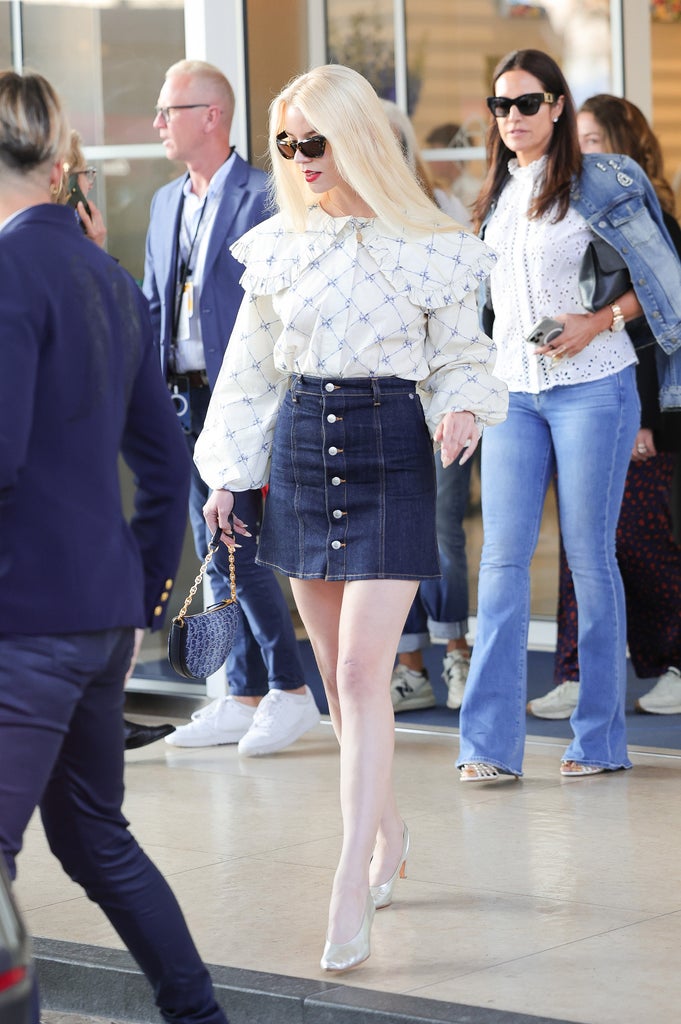
In tandem with managing the growth, behind the scenes Hill is committed to constantly improving the offering, which expanded into homeware and lifestyle in October. “Our biggest thing is that we don’t want to over produce,” she says. “We constantly evaluate, move things around, change the shapes, or designs so that something doesn’t go into production that isn’t right. We stick to four key launches a year and we drop those in smaller batches each month.”
That isn’t lost on the fans either, who tend to turn into repeat customers. “The point of view is very clear,” Weinstein says, adding that she has now purchased everything offered in leopard print. “I love being able to find a vest, and I can get it in other colors because I love the fit. It does a really, really good job with patterns, too. I don’t find that same care or attention with a lot of U.S. brands right now.”
Sarah Killeen, an associate vice president at a healthcare marketing agency in Manhattan, was also bit by the Damson Madder bug this year thanks to a sponsored Instagram post. “The distinctiveness of the clothes feels like an antidote to a lot of the homogenous high street fashion out there at the moment,” she says. “I love the uniqueness, the bold patterns, the interesting details, the unusual silhouettes, and the refreshing color schemes. And the small, thoughtful details, like embroidered logos.”
To date, Killeen has snapped up the Dion leopard pants, denim cargos, the white Kendall shirt, and an oversized shirt jacket. “Both the quality and fit completely surpassed my expectations, which has rarely happened for me with online purchases in recent years,” she raves. “I was drawn to the Dion’s pattern initially, but wasn’t expecting the fit to feel so flattering.”
Hill says she felt compelled to start Damson Madder because she couldn’t afford luxury clothing, and what she found in the sustainability category lacked originality and flair. Fast-forward to now, and her label has bridged the gap between all three. Killeen agrees: “In terms of quality and durability, these feel like investment pieces I will have for years… even though I would have expected to pay a much higher price point for that feeling!”
Like what you see? How about some more R29 goodness, right here?
How Polène Made Its Handbags Go Viral

